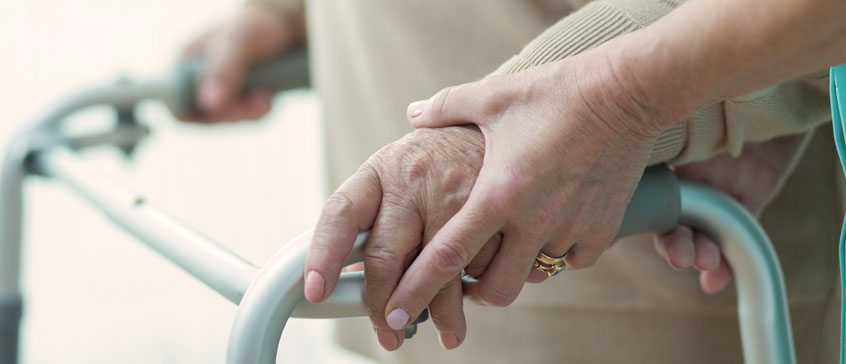Home / Health, Wellness and Safety / News / Unlocking the secret to fall prevention
Unlocking the secret to fall prevention

By: Vicky Scott, RN, PhD, Clinical Professor, School of Population and Public Health, Faculty of Medicine, University of British Columbia
Falls are the leading cause of disability and loss of independence for older adults. They are also one of the last things older adults want to talk about. Yet, talking about why a fall happens is the key to prevention.
Older adults frequently blame themselves for "rushing" or "not paying attention", when in fact; most falls are due to an accumulation of factors. The most common causes of falling are a combination of poor balance, muscle weakness, medications, low vision and environmental factors. Preventing falls and resulting injuries takes assessment and planning to tailor a prevention plan to individual risk profiles.
To identify the factors that determine the fall risk it is important to conduct an assessment of risk using a validated assessment tool. Correctly selecting a tool depends upon the setting, the ability to conduct the assessment and the ability to effectively implement prevention strategies based on the findings.
A thorough assessment typically includes an assessment of fall risk based on known risk factors, a physical examination for underlying medical conditions that contribute to risk, a mobility assessment of balance, gait and strength, and an environmental assessment for hazards in the home and/or public environment.
An example of a validated risk factor assessment tool is the Scott Fall Risk Assessment (SFRA) – a graded eleven-item scale for use in long-term care facilities. Findings from this tool direct the health care provider to the presence of one or more risk and a scoring system for determining the degree of accumulated risk. Recommendations for further assessment is linked to specific risk factors and recommended actions are provided for those with different degrees of risk.
Examples of validated mobility assessments are the Berg Balance Scale, Physiological Profile Assessment test, Time-up-and-Go Test, Sit to Stand Test and the Four-stage Balance Test. Each measure different aspects of mobility, including balance, gait and strength. All have varying degrees of validity and reliability for use in different settings and should be selected based on the greatest predictive ability in specific settings.
More information on these and many other fall assessment and prevention strategies can be found in the Canadian Fall Prevention Curriculum (CFPC) offered by Continuing Studies at UVic. This five-week online program for health professionals and community leaders provides strategies for designing, implementing and evaluating evidence-based fall prevention programs in community, long-term care and home care settings. In addition, the CFPC highlights the importance of effective communication to facilitate the conversations needed with older adults to understand the risks and to bring about the necessary changes to prevent falling.
Another fall prevention program designed specifically for home care aides (community health workers, personal support workers) who provide day-to-day in-home care is Strategies and Actions for Independent Living (SAIL). SAIL is a short, practical 3-week program that providers learners with tools to apply immediately in their work to help clients identify risks for falls and take actions to stay healthy and independent at home.
- Posted March 25, 2021
RELATED TOPICS: Professional Development for Health Practitioners
Latest News
- Bringing the world of AI to everyone
- Playing for the planet: Tackle climate change together
- A full-circle success story: ELC alumni return two decades later
- Managing crises and finding opportunity in the uncertainty
- Orange Shirt Day & National Day for Truth and Reconciliation
Visit Registration
2nd Floor | Continuing Studies Building University of Victoria Campus 3800 Finnerty Road | Victoria BC | CanadaTel 250-472-4747 | Email uvcsreg@uvic.ca
2025 © Continuing Studies at UVic
Legal Notices |
Sitemap

